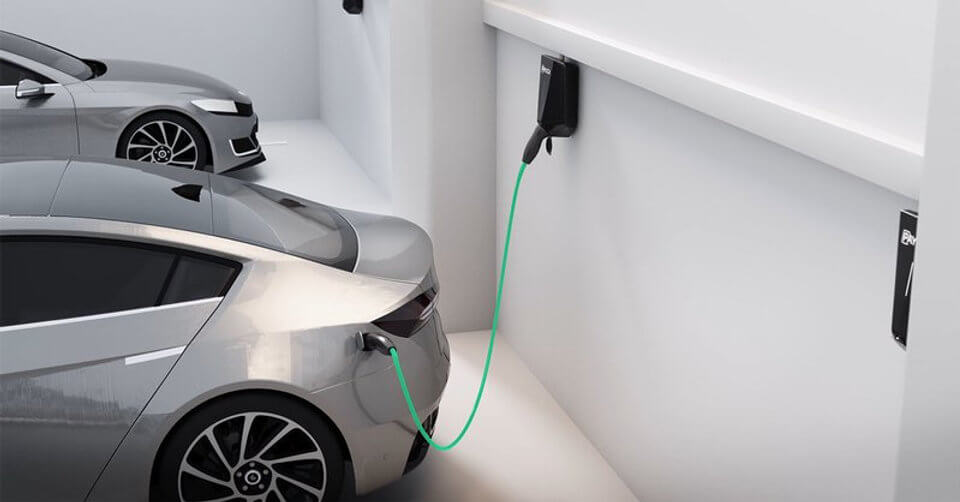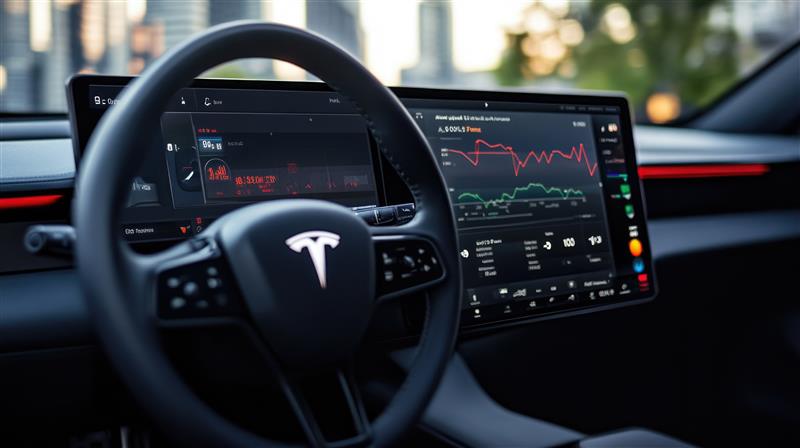As electric vehicles (EVs) continue to reshape the future of transportation, the way we charge them is also evolving. Traditional plug-in charging is giving way to intelligent, AI-powered smart charging stations. These stations are more than just power outlets—they are connected, adaptive systems that optimize energy delivery, reduce costs, and support a cleaner power grid.
In 2025, smart charging stations are where AI meets EV, transforming how we manage energy, drive efficiency, and build sustainable mobility infrastructure.
Introduction to Smart Charging for Electric Vehicles
In the early days of EVs, charging meant plugging in and waiting—without any optimization for cost, speed, or energy flow. Today’s smart charging stations use artificial intelligence and cloud connectivity to:
- Monitor and adapt to grid demand
- Customize charging based on user behavior
- Integrate with renewable energy sources
- Provide data insights for both drivers and utility providers
This makes EV charging faster, smarter, and more sustainable.
What Makes a Charging Station “Smart”?
A smart charging station is defined by its ability to communicate, compute, and optimize.
Core Features Include:
- AI Algorithms: Adjust charging power based on demand, price, and battery health
- Sensor Arrays: Monitor temperature, power draw, and component health
- Connectivity: Links to vehicle systems, cloud servers, and utility grids
This intelligence allows for autonomous decisions in real-time, improving efficiency and extending the life of both batteries and infrastructure.
How AI Optimizes Charging Sessions in Real Time
Artificial intelligence transforms how EVs are charged by enabling:
- Dynamic Load Balancing: Distributes energy efficiently across multiple vehicles at once
- Real-Time Demand Response: Adjusts charging based on current grid stress
- Forecasting Algorithms: Predicts future usage and optimizes accordingly
Whether it’s a single home charger or a commercial fleet hub, AI ensures maximum energy efficiency with minimal cost and impact.
AI-Driven Charging Scheduling and Time-of-Use Management
Electricity prices vary by hour. AI helps users and stations charge at the cheapest and most grid-friendly times.
Benefits Include:
- 💰 Cost Savings: Shift charging to off-peak hours
- 🌍 Grid Health: Reduce peak-hour strain
- ⚙️ Automated Scheduling: No manual input required
By using real-time data and historical trends, AI can build smart schedules that learn from usage patterns and adjust daily.
Vehicle-to-Grid (V2G) Integration and AI Coordination
V2G allows EVs to return energy to the grid—acting as temporary storage units during peak demand. AI makes this bidirectional power flow possible by:
- 📊 Monitoring grid conditions
- 🔄 Managing charge/discharge cycles
- 🔌 Coordinating multiple vehicles in fleet environments
AI ensures that V2G systems remain balanced, non-damaging to batteries, and profitable for users.
Predictive Maintenance in Smart Charging Systems
Downtime in charging infrastructure can be costly. AI helps by:
- 🔍 Detecting early signs of component failure
- 🛠️ Scheduling preventive maintenance
- ⚠️ Alerting operators before faults occur
This leads to longer equipment life and reduced repair costs, especially for commercial and public charging stations.
Dynamic Pricing and AI-Based Billing Systems
AI helps create transparent and flexible pricing models for EV users:
- Time-of-Use Pricing: Charges vary by time of day
- Surge Pricing Models: Higher during high demand, lower when energy is abundant
- Subscription Plans: AI calculates usage trends to suggest the best pricing tier
Drivers can save money, and operators can stabilize revenue based on usage forecasts.
User Personalization and AI-Based Charging Profiles
AI creates personalized charging experiences by learning from:
- User location and commuting patterns
- Charging speed preferences
- Battery preservation settings
Mobile apps and voice controls can even allow users to set schedules remotely, get alerts, and track energy savings.
Role of Cloud Computing and IoT in Smart Charging Stations
Smart chargers rely on cloud-connected platforms and IoT (Internet of Things) devices to function.
This Enables:
- ⏱️ Real-time data sync across users, vehicles, and grids
- 💾 Cloud-based AI model deployment
- 🔄 OTA (Over-the-Air) firmware and software updates
This constant communication ensures charging stations evolve over time—becoming smarter and more secure with every update.
Integration with Renewable Energy Sources
As the world shifts toward clean energy, smart charging stations are designed to work seamlessly with solar, wind, and other renewable sources. AI enhances this integration by:
- 🌞 Predicting solar output based on weather forecasts
- 🌬️ Balancing intermittent supply from wind and sun with real-time demand
- 🔋 Storing excess energy in batteries for future use or grid support
This creates a circular energy model where EVs become both consumers and participants in a green energy ecosystem.
Smart Charging for Fleets and Commercial Vehicles
Fleet operators—like delivery services, rideshare companies, and logistics firms—rely on efficient charging to control costs and maximize uptime. AI empowers fleet operations through:
- 📅 Route-based charging schedules
- ⚖️ Load distribution across multiple vehicles
- 📊 Usage analytics for energy efficiency reporting
By optimizing when, where, and how vehicles charge, businesses can reduce electricity bills, avoid peak-hour surcharges, and prolong battery health across entire fleets.
Case Studies: Tesla Superchargers, ChargePoint, Ionity
⚡ Tesla Superchargers
Tesla’s network uses AI for:
- Real-time stall availability
- Load balancing between stations
- Predictive maintenance and uptime monitoring
🔌 ChargePoint
ChargePoint’s stations incorporate:
- Smart queueing for busy locations
- User-friendly app interfaces with personalized alerts
- Adaptive energy pricing
🚗 Ionity (Europe)
Supported by major automakers, Ionity integrates AI to:
- Plan routes based on user range and charger availability
- Analyze network-wide energy consumption patterns
- Provide dynamic, location-based pricing
These leaders show how AI transforms static chargers into adaptive, intelligent infrastructure.
Challenges in Deploying AI-Driven Charging Infrastructure
Despite the benefits, several hurdles remain:
- 🔌 Interoperability: Ensuring different EV brands and charger types communicate smoothly
- 🧠 AI Model Complexity: Balancing speed and accuracy of predictions in real-time systems
- 🔐 Cybersecurity: Protecting user data and charging stations from digital threats
- 🛠️ Hardware Costs: Smart chargers are more expensive to install and maintain
These challenges must be addressed to scale AI-driven EV infrastructure globally, especially in developing regions.
Future Trends in Smart Charging Stations (2025–2030)
The next five years will bring exciting advancements:
- 🤖 Autonomous EV charging stations that dock and connect without human help
- 🧠 Self-healing AI grids that reroute power automatically during outages
- 🏙️ Urban charging hubs that manage hundreds of vehicles with AI-directed energy flow
- 🌐 Blockchain-enabled transactions for peer-to-peer EV charging
As adoption rises, smart charging will become the default model, powering not just vehicles—but entire smart cities.
Conclusion
Smart charging stations are no longer just accessories—they’re essential infrastructure for a world transitioning to electric mobility. By merging AI with power delivery, these stations can optimize energy use, reduce grid strain, support renewables, and personalize charging for every driver.
In 2025 and beyond, smart charging will define how we fuel the future—cleaner, faster, smarter, and more connected than ever before.


